
In Awe of Aeoniums
May, 2021
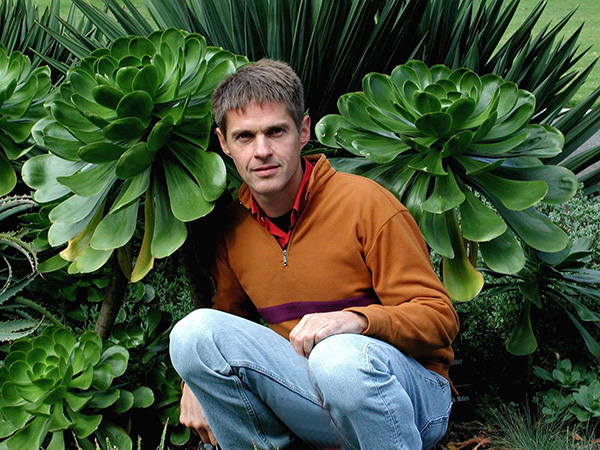
How vividly I recall the moment it began, my yearning for aeoniums! On a chilly Melbourne midwinter morning 20 years ago during my first visit to Australia, transfixed by the splendor of the Royal Botanic Gardens Victoria, I wandered slack-jawed and stupefied amidst the astounding beauty of the most gorgeous horticultural park I had yet seen. Rounding a bend in the path, I was stopped in my tracks by a dazzling constellation of Aeonium arboreum1: sumptuous succulents in a size I had never imagined possible. A mesmerizing cluster of enormous, hemispherical, fleshy and lustrous rosettes seemed to whirl before my eyes, their emerald orbs hovering atop smooth-skinned, meter-high trunks. It was love at first sight. Gingerly, I stepped into the garden bed, posing for a furtive photo between two of the titans.
Upon my return home I printed and framed that picture, placing it on a wall where I’d be sure to see it every day, resigned to the improbability of recreating that idyllic scene in my Seattle garden. Instead, I began collecting little specimens, growing them singly as well as in mixed containers, but lamenting both how slowly they grew and how poorly they overwintered under my care. Occasionally on visits to California botanical gardens such as UC-Berkeley, San Francisco’s Strybing Arboretum and the glorious Ruth Bancroft garden in Walnut Creek, I’d longingly admire mature stands of A. arboreum and rekindle my desire to have the same.
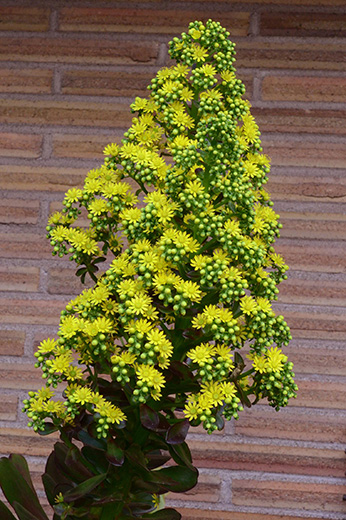
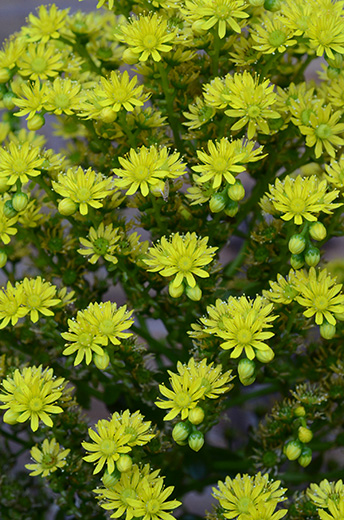
Gradually it dawned on me that the larger, darker cultivars ‘Atropurpureum’ and ‘Zwartkop’2 were more robust and resilient than fussy smaller taxa such as ‘Kiwi’ and ‘Sunburst’, so I began to experiment, planting them out in garden beds in early summer and digging them to drag inside in late autumn. This proved modestly successful but fell far short of fulfilling my fantasy. About 10 years ago, however, things began to slide into place. At a local nursery I scored a sizeable pot of A. ‘Cyclops’3, a reddish-bronze stunner that sports bright green “eyes” of new growth in the rosette’s center. Fatefully, I made space for the multi-trunked marvel in my south-facing succulent bed and tucked it in among aloes, agaves and jade plants. This zone is under wide eaves and able to be protected during Arctic spells by interlocking, wood-framed acrylic panels my handy husband made for me.
There it thrived; a few years later one trunk produced a beguiling, golden conical inflorescence composed of hundreds of starshaped yellow flowers. Late that summer, I absentmindedly shook the desiccated blossom stalk as I removed it, thus scattering seed across the lava rock mulch and into several containers. To my amazement they germinated the following spring: Dozens of tiny rosettes slowly lifted their dappled heads. Due to their hybrid heritage, they ran the gamut in color —some were pure green, others rusty red or dark bronze. I let them grow in place for a year, more out of torpor than design, finally mustering the energy to prick them out and pot them up. Since then, several more stalks have set seed. In my experience seedling growth accelerates in their third year, especially during the wet months of late autumn. Unlike clivias, aeoniums are winter growers and require moisture during the darker, colder months.
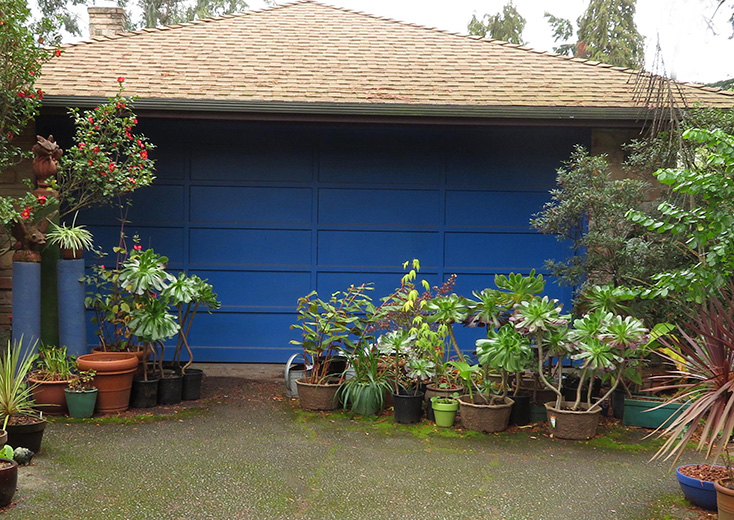
It was then I stumbled upon a way to nurture these cool-coastal succulents: 1) Leave them in the ground as late in the season as possible before lifting (a surprisingly easy task, as they have compact root balls and don’t flinch at being moved), 2) Lug the pots under shelter only when a hard freeze (below 27 degrees) is imminent, 3) Pull them outside when the cold eases so they can soak up nourishing rain. They can tolerate two or three weeks in a dark garage, but their pots mustn’t dry out. This year, when the big February snowfall loomed, I experimented with a trio of knee-high specimens, building a protective insulating frame around them, and left them in place. They sailed through unblemished (See short video here). In late March I replanted the other specimens I had lifted as usual.
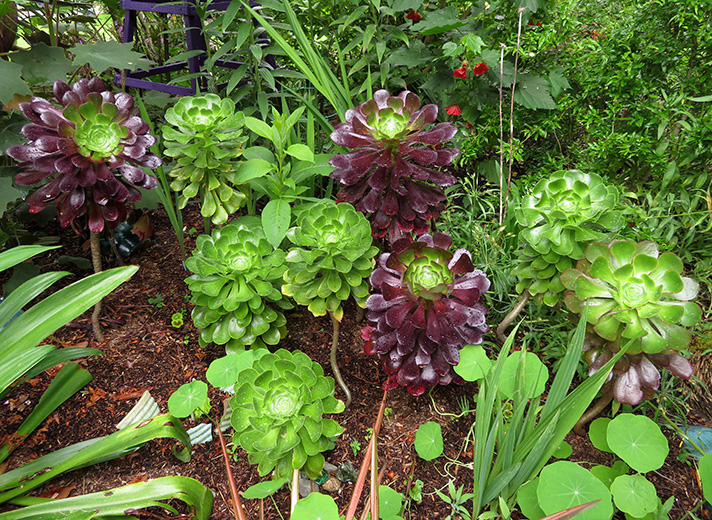
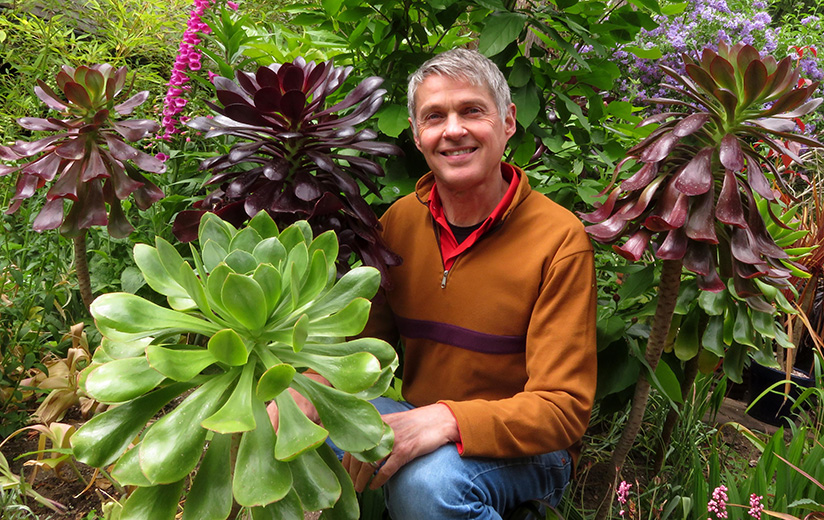
At this writing, I’ve got more than 40 of my own aeonium seedlings in the ground all over the garden. The tallest clutch measures 45 inches in height. A few days ago, I tried to recreate with my own progeny that Melbourne scene from two decades past. In the current photo the gardener looks quite contented, although a bit worse for wear. Once in a while one can return to Eden, if only for a moment.
Wishing you all a fruitful summer, I’ll see you in September.
Horticulturally yours,
Daniel
- Aeonium is the Latinized form of the Greek αἰώνιος (aiṓnios), meaning “eternal” or “perpetual”; arboreum means “treelike”. This genus of succulents is in Crassulaceae, the stonecrop family that includes sedums, sempervivums and jade plants. The 30 or so Aeonium species are native to the volcanic Macaronesian archipelagos of the Canaries and Madeira as well as nearby coastal areas of Morocco.
- ‘Zwartkop’, a dark purple selection of A. arboreum, means “black head” in Dutch. This cultivar is also marketed under its German name ‘Schwarzkopf’, which means the same.
- The aptly named hybrid, ‘Cyclops’, developed in 1988 by Jack Catlin in California, is a cross between ‘Zwartkop’ and the species A. undulatum.
